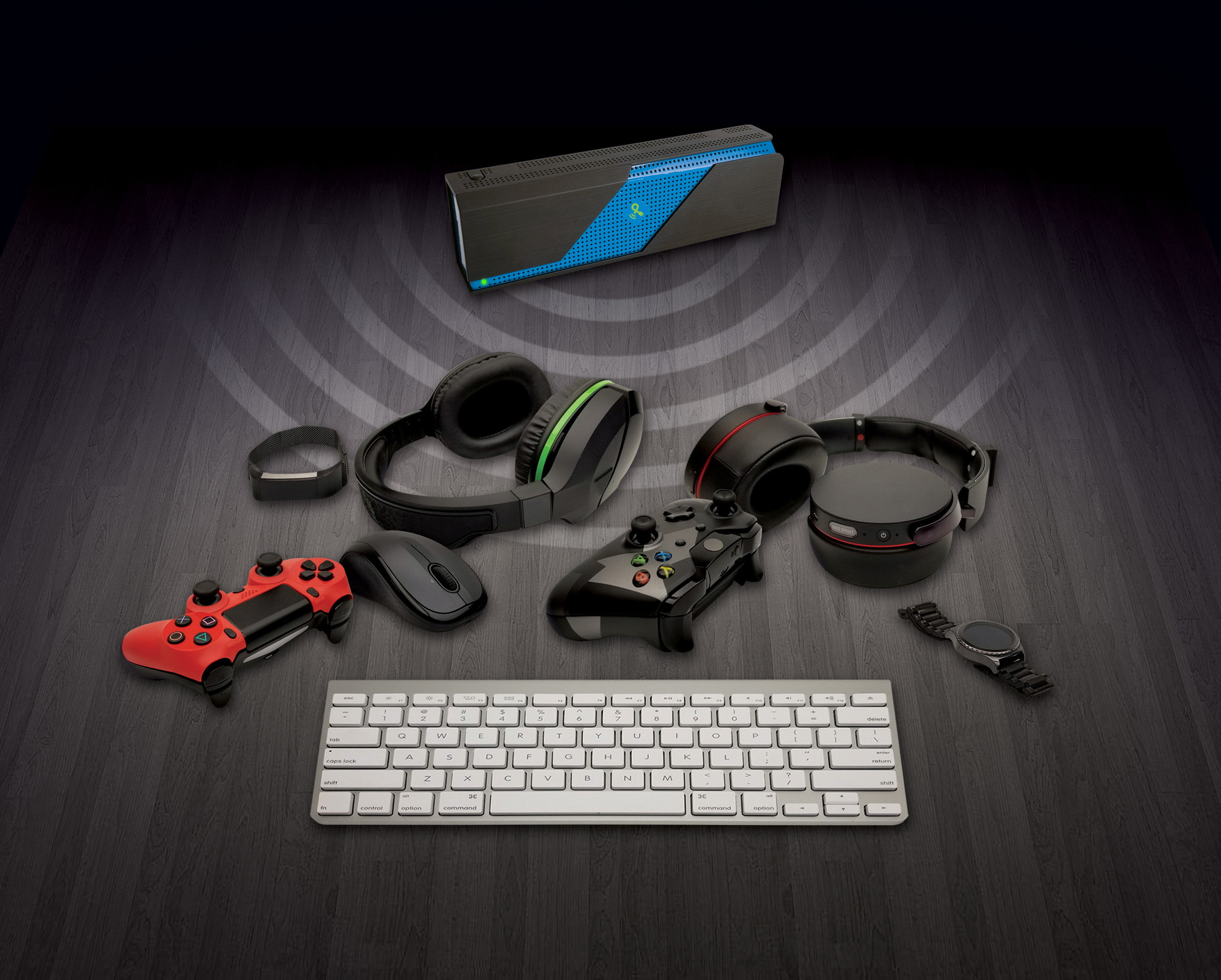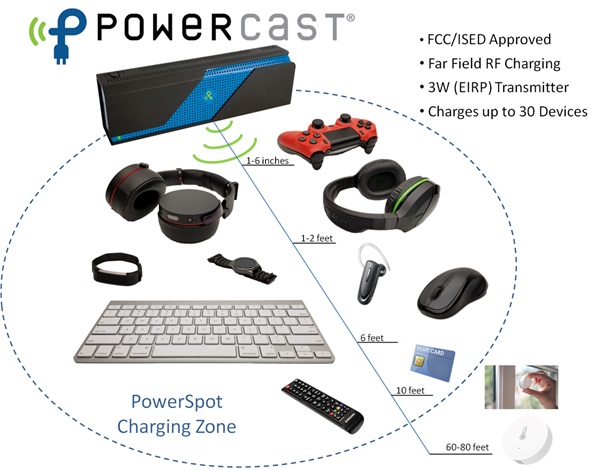PowerSpot Transmitter Can Wirelessly Charge Devices Up To 80 Feet Away
Powercast, a Pittsburgh-based wireless charging company, unveiled a new FCC-approved transmitter called a “Powerspot” that can output up to 3W of power to what may be the longest range we’ve seen from a wireless technology so far: 80 feet.
Untethered Power
Since 2003, Powercast’s mission has been to try and eliminate not just charging cables, but batteries as well. The idea is that in the future, power could be coming from everywhere around you. Therefore, you wouldn’t even need batteries, or at least not very large ones.
Powercast has built two transmitters, the original one called the “Powercaster,” which the FCC approved in 2010, and the newer “PowerSpot.” The company targeted commercial and industrial applications with the Powercaster, presumably because of its larger size, while the more compact PowerSpot will target consumers.
Powercast has also built a receiver chip that can be embedded into devices, called the “Powerharvester,” due to the way it “harvests” the RF energy transmitted by the Powercaster or the PowerSpot.
PowerSpot Specifications
The PowerSpot transmits 3W of Effective Isotropic Radiated Power (EIRP) to the Powerharvester receiver over the unlicensed 915MHz band. It comes with an integrated 6dBi, directional antenna (70-degree beam pattern), a 5V DC power jack, and requires no configuration. The device is small enough (185.4 x 53.3 x 35.6 mm) that it can be put on a desk or nightstand.
Like WattUp and Cota, the PowerSpot can deliver several Watts of power up to a few feet distance between the transmitter and the receiver. However, the amount of power they can deliver is directly tied to their ranges.
Powercast said that power-hungry devices such as game controllers, smart watches, fitness bands, hearing aids, ear buds, or headphones charge best up to two feet away. Keyboards and mice can be charged up to six feet away. The PowerSpot can charge TV remotes and smart cards up to 10 feet away.
Get Tom's Hardware's best news and in-depth reviews, straight to your inbox.
Where things get interesting with the Powercast technology is that it can work up to 80 feet away, but as you can expect you will get much less power at that range. However, the technology could still be used to power small sensors, such as temperature sensors or window-breakage sensors.
The company said that up to 30 devices can be charged at once by a single PowerSpot. However, the up to 3W of power will have to be shared among them, which doesn’t leave too much power for each individual device, even at close ranges. Not many users will want or even have 30 Powerharvester-enabled devices to charge anytime soon, and by the time they do presumably the technology will improve, too.
Powercast will demo its PowerSpot transmitter at CES early next year. One PowerSpot transmitter is expected to cost $100 and ship in Q3 2018. Once it reaches mass production the price could drop to half and sell at $50, the company said.
Lucian Armasu is a Contributing Writer for Tom's Hardware US. He covers software news and the issues surrounding privacy and security.
-
cryoburner Reply
Fixed. : 320531368 said:Not many users will want or even have 30 Powerharvester-enabled devices to charge anytime soon, and by the time they do presumably the technology will be obsolete, leaving them with a bunch of devices that they need to replace.
Also, powering something like a wireless gamepad or headphones from within 2 feet of the transmitter, confined to a 70 degree directional cone doesn't seem all that useful. If you're going to need to place higher-drain devices on a certain portion of your desk just to make sure they charge properly, how is that an improvement over something like a short-range charging pad? And at 10 feet, it sounds like you're mostly limited to charging low-powered devices like TV remotes, most of which could just as easily run on a AA battery for years. The same goes for things like temperature or security sensors at longer distances, and I would question the reliability of a security system reliant on wireless power delivery. I'm sure there are some good uses for something like this, but I'm not all that convinced by the examples they provided. -
hannibal Yep... Start product. I teresting to see the radiation tests... compared to normal WLAN router. If it is in same gategory, fine. If it has larger power, hmmm. Do you wanna see how I clow In The dark ;)Reply -
torka Its nice to see that someone can finally start producing something that Nikola Tesla invented a hundred years ago, without being silenced.Reply -
alan_rave It's fine, when man does not have a microwave in the aparthotel for example. You can buy a cheap one))Reply


